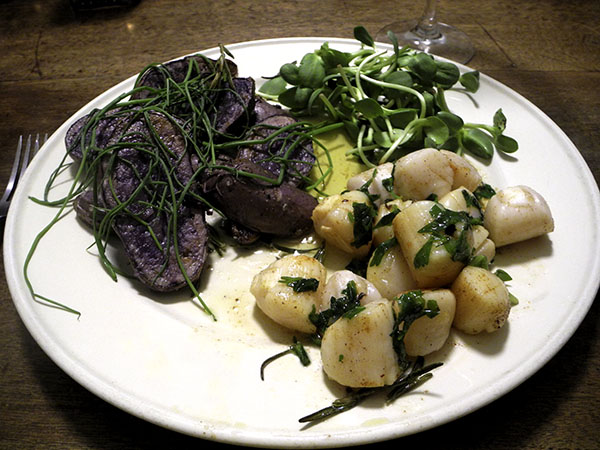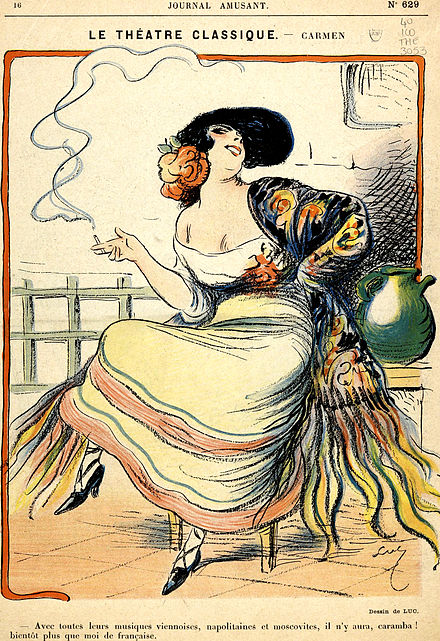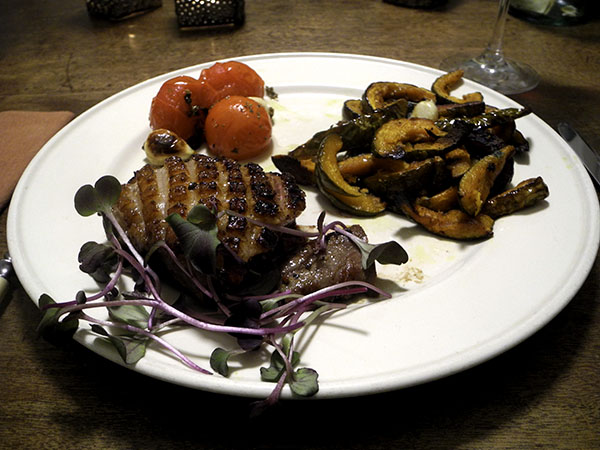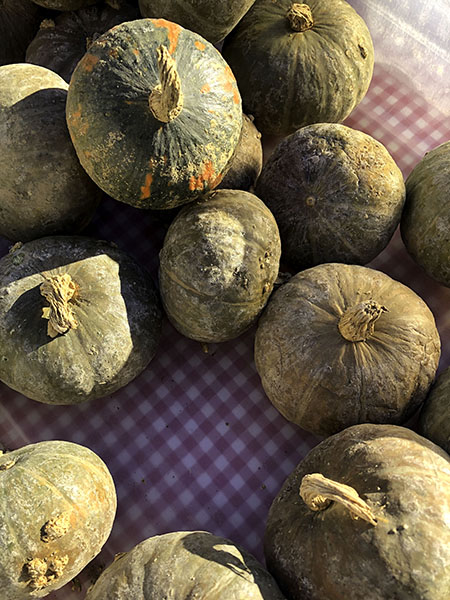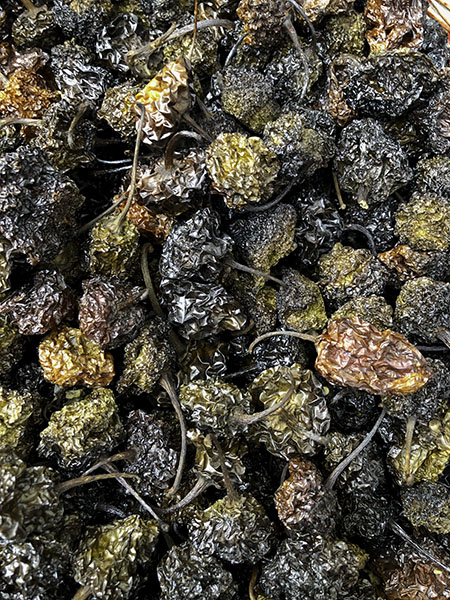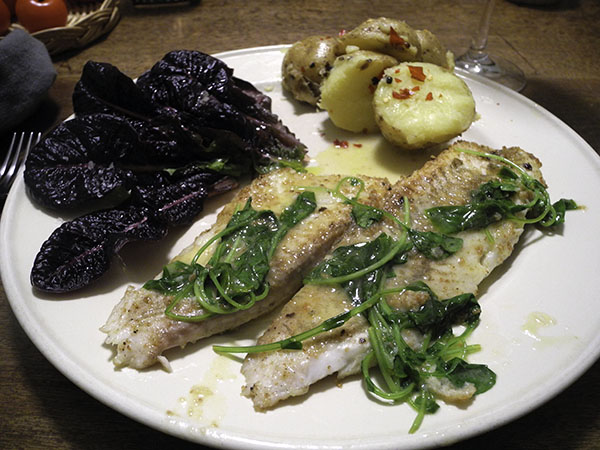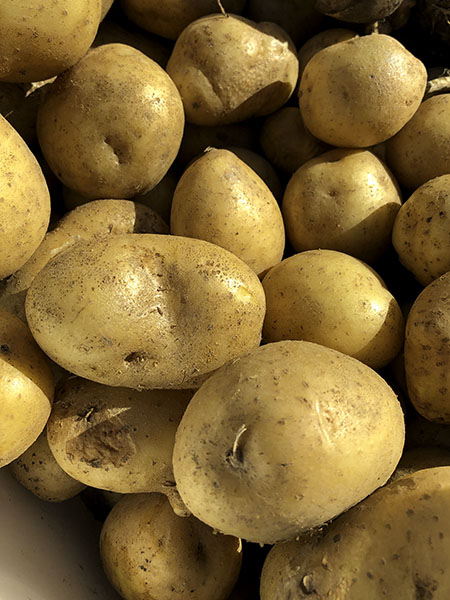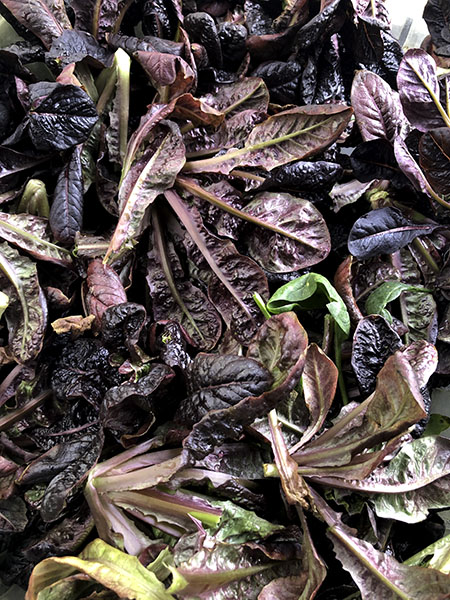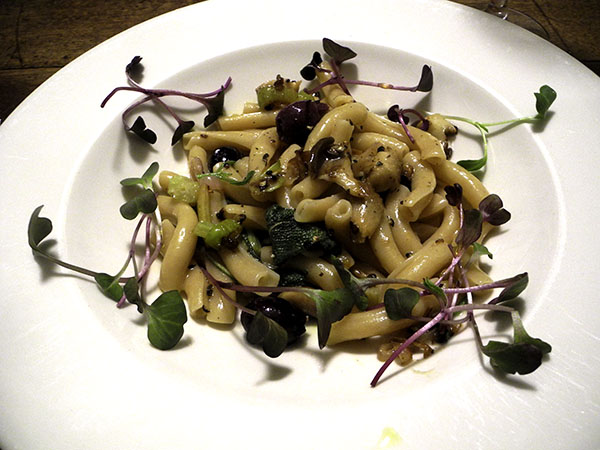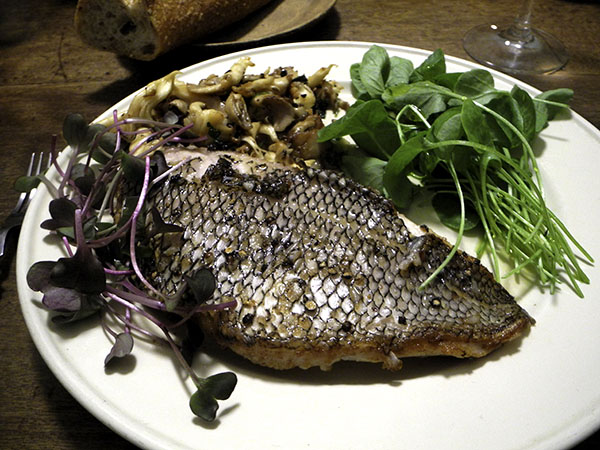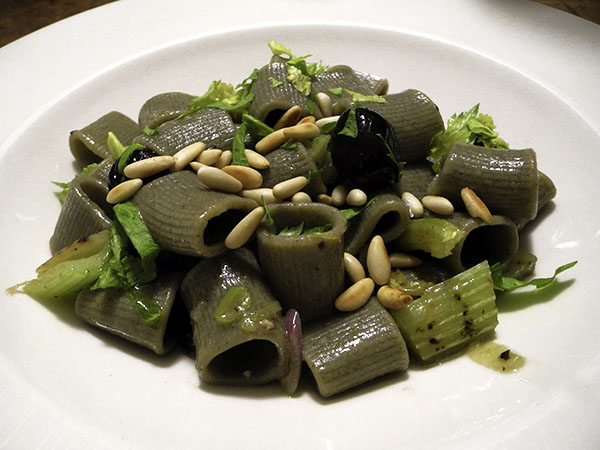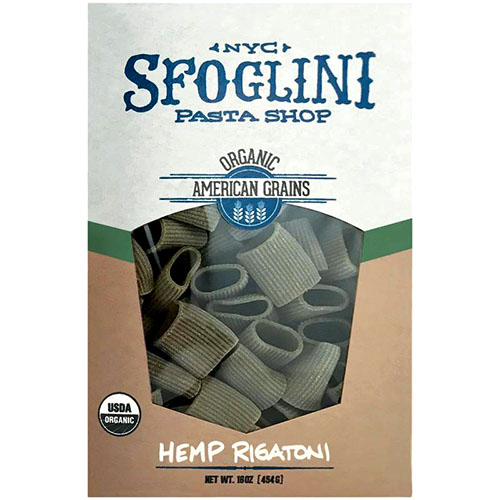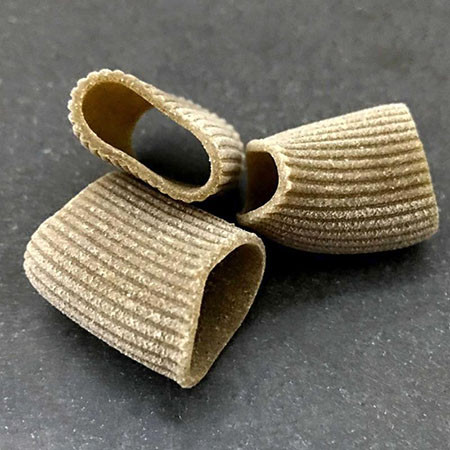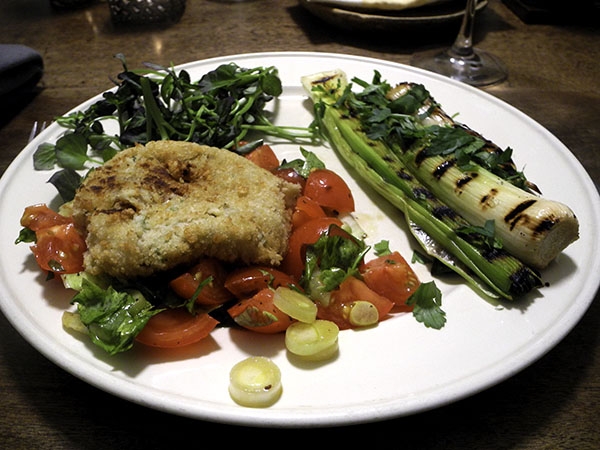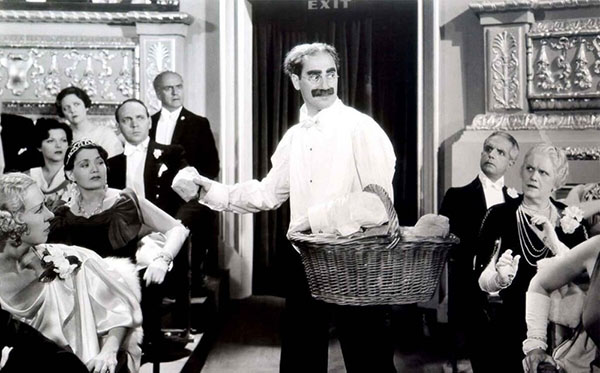
Like many nights, dinner at home was also a night at the opera.
A note on the subject of our dinner music: During our evening meals we often listen to a recording of an entire opera (or a large section of one, continuing it later that night or the next day). I could call it our version of the little-mourned 1970s ‘dinner theater’ vogue, a cringeworthy form of entertainment that is now fortunately just about defunct, but I’m not going to.
Yet I do think our arrangements of dinner with classical music theater, even without the visuals, beats any other way of enjoying the operatic art form, except for the right seats at a good live performance. I have to point out that one thing in its favor not available to audience members at a live performance is the pleasure of exchanging reactions to the work, either silent or spoken, while sitting across from the perfect dinner (and opera) companion. Also, being able to talk freely during the performance, and and to call for – and get – an “encore” of a particularly good aria or section from the piece. Oh, also, always some good wine at your seat.
Still, the food is always the evening’s raison d’être. Last night, while we listened to [most of] a great recording of Vivaldi’s ‘Il Farnace’, we were also enjoying a very good dinner.
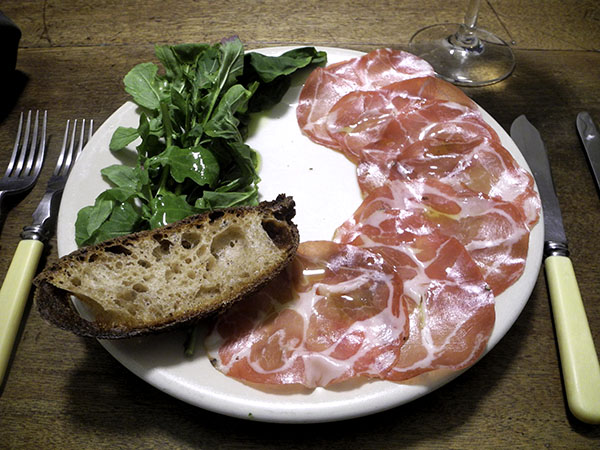
The first course, although dominated by a meat, was uncharacteristically lighter than the main course of fish (noting that, had the order been the other way around, a heavy seafood dish followed by a light one of meat, it would not have been nearly as satisfactory).
- a little more than 2 ounces of Giorgio’s coppa dolce from Flatiron Eataly, drizzled with a bit of Trader Joe’s unfiltered Italian Reserve extra virgin olive oil
- a small spray of arugula from Norwich Meadows Farm, also drizzled with olive oil, and sprinkled with Malden salt and freshly ground black pepper
- slices of the excellent ‘table bread’ (half organic bread flour, half fresh milled whole grain
wheat, spelt, rye, malted barley, plus water and salt) of Philadelphia’s Lost Bread Co.
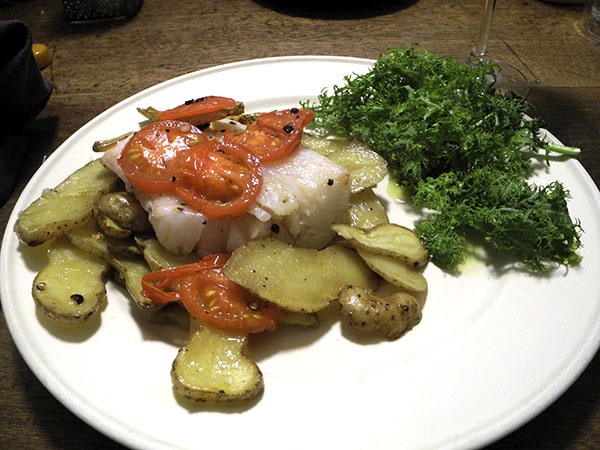
The main course was commissioned by Barry, who requested an entrée of a firm white fish roasted on the top of sliced baked potatoes, for a cold February evening.

For what it’s worth, there were 11 potatoes left in the farmers’ basket on Monday. I bought them all. They weighted exactly one pound. Every one of them was perfect. Nice.

- two 7-and-a-half-ounce cod fillets from American Seafood Company in the Union Square greenmarket, cooked using at least the basics of a recipe from Mark Bittman which I had come across many years ago, the cod washed and rinsed, placed in a platter on a bed of coarse sea salt, with more salt added on top until the pieces were completely covered, then set aside while a bed was prepared for them composed of a pound of la ratte potatoes from Phillips Farms, each sliced lengthwise by hand into 4 or 5 sections to a thickness of roughly 1/4″, then tossing them in a large bowl with olive oil, salt, black pepper, and a pinch of a dried smoked Scotch bonnet pepper from Eckerton Hill Farm, arranging the potatoes, overlapping, inside a rectangular glazed ceramic oven pan and cooking them for 25 minutes or so in a 400º oven, or until they were tender when pierced but not fully cooked, and then, the cod having already been thoroughly immersed in many fresh changes of water to bring down the saltiness, the fillets drained, dried, and placed inside the pan on top of the potatoes, drizzled with a little olive oil and sprinkled with black pepper, blanketed with thin slices of 3 Backyard Farms Maine ‘cocktail tomatoes’ from Chelsea Whole Foods Market, the tomatoes seasoned, lightly, with salt and pepper, the pan returned to the oven for about 8 or 9 minutes (the exact time depends on the thickness of the fillets), the cod removed with a spatula (or, better, 2 spatulas), along with as much of the potatoes as can be brought along with each piece, arranging everything as intact if possible onto the plates, returning to the pan for the remainder of the vegetables

- a handful of very beautiful and absolutely delicious ‘frizzy mustard’ greens from Norwich Meadows Farm, drizzled with a bit of the same Trader Joe’s olive oil, which is really very good
- the wine throughout the meal was a California (Central Coast/Santa Ynez Valley) white, Rick Boyer Santa Ynez Valley Dry White Blend 2017, from Naked Wines
- the music throughout the meal was the first two acts of Vivaldi’s three-act 1726 opera, ‘Il Farnace’, in an extraordinarily beautiful performance led by Jordi Savall; when we listened to it one year ago I wrote that “..it was now at least our third hearing, not counting this one, from over 12 years ago, in which Vivaldi’s music accompanies Muntean/Rosenblum’s ‘It Is Never Facts That Tell’, the collaborative’s digital projection of a great world emptied and reduced to an enormous landfill, achingly beautiful, even without the music which accompanies its hooded figures”; we’re listening to the third act of the Jordi Savall recording as I write this the next day
[the image at the top, a still from the 1935 Marx Brothers comedy, ‘A night at the Opera‘, is from Film Forum, but the link is not loading right now]
